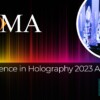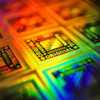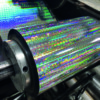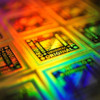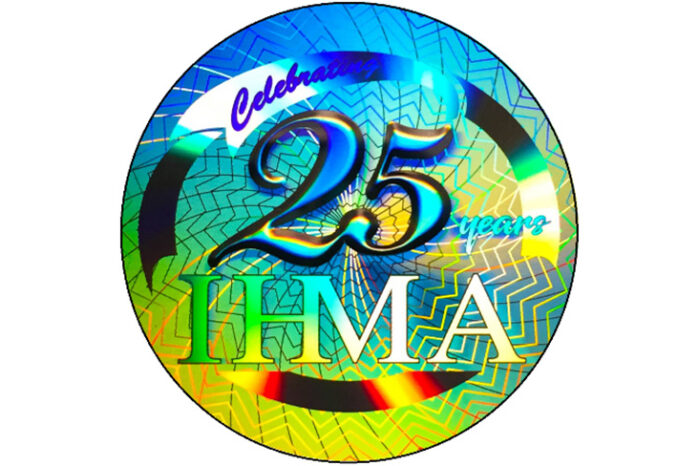
The IHMA: 25 Years of the Industry Trade Body
3 Apr 2018 | Press Release
In 1993, the International Hologram Manufacturers Association (IHMA) was established, and since then, the organisation, which supports producers and converters of holograms for banknote security, anti-counterfeiting, brand protection, packaging, graphics and other commercial applications around the world, has evolved to become a global voice on authentication and security devices. As part of a series, Holography News® interviewed four leading industry insiders who were around at the time (and still are) to reflect on 25 years of ups and downs and holography’s future evolution. We start this article with the very first chairman of the IHMA, Dr David Tidmarsh.
For background, David is the Chairman of Currency Publications, former CEO of Applied Holographics and former Managing Director of Reconnaissance International. David was also Sales Director for Crane Currency up until 2010. Prior to this David held various senior management and leadership roles for Bemrose Corporation, where he was a main board director for six years.
David is an industry veteran with encyclopaedic knowledge, experience, insight, technical and product expertise in the authentication, currency and holographic sectors, to name but a few.
 An Interview with David Tidmarsh
An Interview with David Tidmarsh
Q: What do you see as the key ups (and downs) of holography over the last 25 years?
A: The most significant event in the use of a hologram in security was first the adoption of holography in a stripe in the € 5, 10, and 20 and as a patch in the €50, 100, 200 and 500 in the late 1990s before their issuance in 2002, and then the retention of the hologram again as a major public security feature for euro series two.
This was a major endorsement, leading to many other central banks adopting holograms for their banknotes as they upgraded or brought out new series. I would say that holography has also succeeded well in the gift, stationery and toy sector and, particularly, for gift-wrap.
Q: How has the technology evolved in almost three decades?
A: There has been advancement on two fronts: origination and material science. Both have been critically important in allowing holography to advance to its present level, which is as a very sophisticated and reliable product in whatever field it is being used.
Holograms have been developed that can resist harsh chemical and durability tests for banknotes, showing they can survive in circulation. And against all odds, given their ubiquity, together with banknotes’ use of scarce materials or technologies, we see today that almost 30% of current banknote denominations feature holograms.
Q: What are the obstacles to future growth?
A: A key challenge will be maintaining holography as a security feature, despite its increasing adoption in other markets. The Hologram Image Register will continue to help here, together with the industry code of conduct, allowing security hologram producers to continue to assure customers of their integrity and that of their competitors, who are also IHMA members.
Q: How has the IHMA evolved with the times? What’s been its biggest success?
A: Without doubt the IHMA’s survival has been its biggest success – there are members that have absolutely nothing in common but holography. Some make holograms for banknotes and passports, others for packaging film. Others head-up displays (HUD) for cars and planes and others works for three-dimensional art.
But all acknowledge each other’s achievements. Holography remains highly regarded as both a science and an art.
Q: How should the IHMA position itself for the next 25 years to meet the changing needs of its members and the wider industry?
A: I’m confident that the industry will continue to monitor and predict trends – and respond with relevant, innovative products. There’s also a need for all involved in holography to have both an active association and a forum that brings together members to share experiences, concerns, developments and opportunities.
My crystal ball tells me that holography will be around in 25 years – in what form or use I cannot predict, but things that please the eye and fascinate will always have a place in society.







